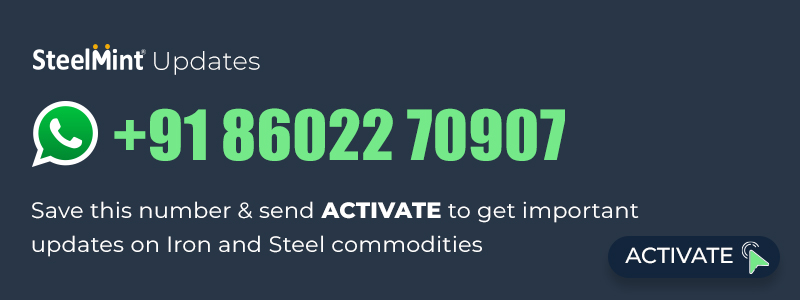India: Coking Coal supply tightness from Australia supports prices
Indian primary mills, despite the surging prices of coking coal in May-Jun’21, showed a preference for the premium grades, keeping their bookings firm. It may be re...

Indian primary mills, despite the surging prices of coking coal in May-Jun'21, showed a preference for the premium grades, keeping their bookings firm.
It may be recalled that in the first four months of the year especially from Feb'21, coking coal prices were low. The premium HCC hovered in the range of $145.9/t FoB in February, then decreased to $134.6/t in March and April. Similarly, the HCC mid-vol traversed down from $139.1/t FoB in February to $130.4/t in March and $129.6/t in April.
Consequently, mills booked in good volumes till April for June/July deliveries. In March and April, alone around 9.83 million tonnes (mn t) were booked on the back of the lower prices.
Prices dropped because of China's ban on Australian coals since mid-Oct'20 and excess supply for some time too.
However, prices started shooting up from May because of a squeeze in supply from Australia which is India's main sourcing country. Prices in May for the premium HCC spiralled to $178/t FoB and then to a heady $204/t in June. The HCC mid vol too climbed to $161.6/t FoB in May and $184/t in June. Export prices for the premium low-volatile (PLV) grade of Australian HCC, in particular, spiked to $194/t FoB on 30 Jun'21, up almost 90% since the beginning of the year.
Australian coking coal export prices found support as Japan, South Korea and India consumed the oversupply following China's import ban on Australian coals.
Why was there a supply crunch?
- Anglo American a major coking coal supplier, went into Force Majeure for 7-8 months while BHP, another mining giant, seeing prices heading south from February onwards, put some of its mines under maintenance. South 32, another major miner, was shifting to the Long Wall mining technology which disrupted its supply.
- There were weather challenges like floods which disrupted supplies from Australia.
- A few Chinese traders that used to supply Australian coal to China before the ban, diverted some of the Australian material to Europe at higher prices.

Why did demand stay firm?
But, interestingly, SteelMint's data reveals, despite the sharp price increases, mills kept their booking volumes firm at 8.40 mn t over May-Jun'21.
As a result, Jan-Jun coking coal imports to India rose to 28.55 mn t compared to 25.84 mn t seen in the same period in CY'20.
- Not only did mills keep their booking volumes high, there was a sharp rise in demand for the higher grades over May-June'21. A huge container shortage resulted in high freights which led to preference for higher grades. Because, irrespective of the grade, the freight was the same and it made more sense to buy better grades for better yield.
- Indian mills were compelled to continue importing coking coal from Australia, despite supply tightness, container availability issues and rising freight rates, because the other coking coal exporting nations primarily concentrated on supplying to China at elevated prices.
Outlook
There is likely to be more cargo available from September onwards since supply is expected to improve. Consequently prices are expected to drop, which may fuel further demand from the Indian mills.
"The mills will honour their quarterly contracts irrespective of the prices since steel production will likely be at optimal levels post-monsoon when demand is expected to return," said a source, adding, "With the expected price drop, there can be incremental demand from India".
Nevertheless, Indian buyers are not expected to resume full-scale restocking in the immediate short term despite the easing of lockdowns in several states, as end-users are presently well-stocked with sufficient inventory levels.


Prices as on 9:00 IST, 11 Aug. d-o-d changes indicated against closing price of 10 Aug.


